15 Types of Visual Content to Capture Organic Traffic
According to a study published by HubSpot, 93% of people prefer to consume visual content (videos, imagery and infographics) over text content.
Visual content will always have a higher level of engagement than text alone. When creating content, it's essential to understand the role of visuals in your copy. Using visual content can increase the number of conversions. In this article, I'll explain some types of visuals that are best for your site.
The study found that images get almost 20 times more engagement than text, making sense that visual content converts better. But it's not always clear which types of visuals convert the best. This article will show you some of our favourite ways to use different types of visuals on your blog. It's important to note that the types of visuals we're talking about are only some of the many ways to use them.
Table of Contents
What is Visual Content Exactly?
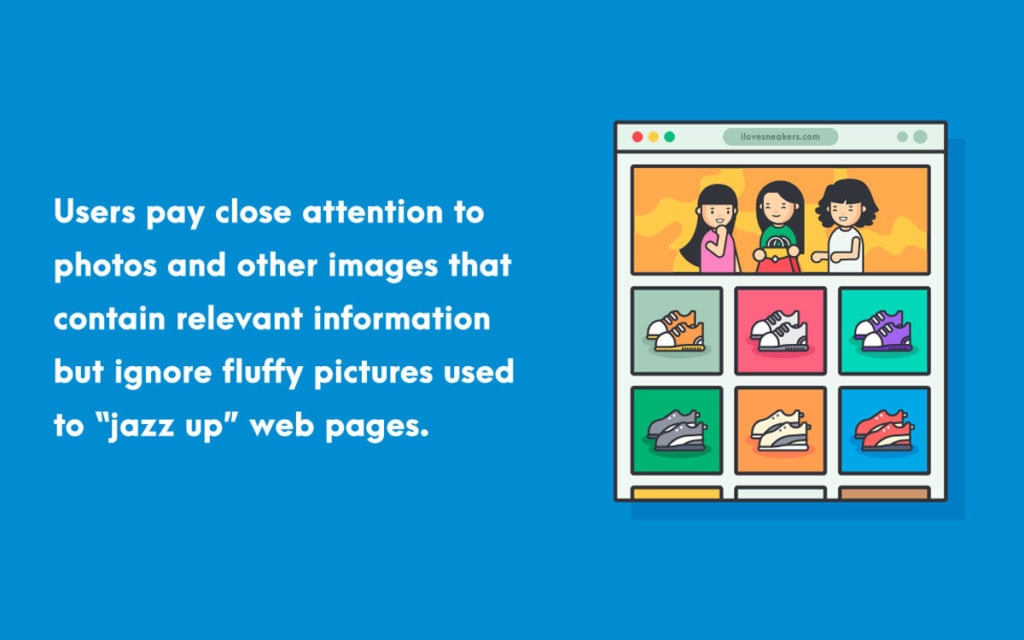
Visual content provides visual information for a business to attract its target audience. This includes images, graphics, videos, presentations, websites, social media posts and blogs.
Content is vital in the marketing world. However, it needs to be well-written and attractive. This will make the reader interested in reading more and lead them to the business. The content must provide the necessary information that the reader needs.
When creating content, the writer must keep in mind their target audience. They should understand what their customer wants and how to satisfy them. Understanding your customers and their needs is vital to creating successful content. If customers cannot be satisfied using a product, they will not use it. This means that content should focus on the needs and demands of the customer.
There are many ways to provide this kind of information. This could include the following:
- A website with a clear mission statement.
- Information in brochures or flyers.
- Images or graphics in any promotional material.
- Text on a billboard or poster.
- A television commercial.
- An advertisement in a magazine.
- A blog post.
Visual content helps businesses connect with their target audience. They can do this through exciting and appealing content to the target audience. A business owner can also use this content to increase awareness of their company, products or services. They can use it to increase sales and encourage potential clients to visit their site or buy their products.
The Importance of visual content in marketing

It is a fact that people are visual creatures. They consume information visually. They look for and find content visually, which is true of both print and digital media.
Visual content is just as important in marketing as written content. Combined, the outcome can be incredibly effective in creating an engaging and compelling customer experience. There are several reasons why visual content is valuable.
First and foremost, visual content is easier to understand.
We live in a fast-paced world where we need to process information quickly. People don't like to read long documents, especially if the document is lengthy. When making decisions, people want information that is presented quickly. The faster it is processed, the quicker it will make a decision. This is why videos and images are used so frequently in marketing campaigns. They are quick to understand and, therefore, more likely to be watched or shared.
Secondly, visual content is visually appealing.
Our brains are hard-wired to respond to visual stimuli, so we are more drawn to images than words. When it comes to reading, words are read from left to right. But the brain takes the picture from top to bottom when looking at images. Therefore, visual content is inherently more exciting and appealing.
Thirdly, visual content makes content marketing more manageable.
While many online businesses have started using video marketing because it has become easier and cheaper to produce, it's not always the case. If you wanted to write a piece of content, you would have to do it, and then upload and edit it. With a video, however, you only need to shoot and upload it. It is easier to produce. This makes it easier for businesses to get video marketing off the ground.
There are many more reasons why visual content is vital in marketing. It's easy to share, more digestible and appealing. It helps brands stand out from competitors. It works well on social media. And it's less expensive to create.
As you can see, visual content is critical to marketing. It's the key to ensuring that you are communicating effectively. It's the key to making sure you attract customers. So, the next time you have something to say, whether it's a video or a blog post, make sure it's visually appealing. Make sure that the content is clear and accessible. And most importantly, make sure that the content is applicable. If you are not making engaging content, it will not help you.
15 Types of Visual Content Marketing to Capture More Organic Traffic
Visual content marketing captures more organic traffic than other types of content. It has been proven that visuals perform better than text alone in digital marketing. This is because people are visual creatures, and when we are exposed to images and videos, our brains will process the information faster than if it were just text. In addition, there is also a massive amount of content being produced every single day.
1 – Photos

Websites are filled with photographs – there's no way to avoid it. But sometimes, it's easy to forget the power of visuals.
If you haven't worked this one out already, here's why it's important to use photos in content marketing:
- Photos are powerful. A picture is worth a thousand words. Whether we like it or not, photographs convey a message far quicker than words alone.
- A good photograph can boost brand recall. If you promote a new product or service, a photo of an actual product is far more powerful than a generic logo image.
- Photos can persuade. A good photograph can be an effective sales tool. If you have ever purchased an item because of a photograph on the Internet, then you know how powerful images can be.
- Photos are easy to share. Sharing a photograph on Facebook, Twitter, LinkedIn, Pinterest, Instagram and so on is much easier than using text to spread the word about your products and services.
- Photos can improve your SEO. Search engines like to see images on websites as this signals that the page contains valuable information and is worth indexing. This means your content is easily found on search engine results pages.
- You can use photos to engage with customers. As you create content for your business website, you can include a photo of your product or service. Your customers might appreciate being looked at by your business.
- You can use pictures to improve your marketing message. If you're selling a product, you can use a photo to illustrate how it's being used, how it looks, and so on.
- You can illustrate what the service entails if you're selling a service. You can provide examples of how the service has been used and how it can benefit the customer.
- It's easy to add images to blog posts and social media messages. Many online tools make it easy to add images to your blog, social media updates, etc. You can then share these with your contacts.
The power of visual content is evident in blogs and social media sites, but it's easy to underestimate the importance of images on your business website. If you have a good range of photographs, they can enhance your website and make it more attractive to visitors.
We've been impressed by some businesses' work using the above suggestions. The next time you work on your business website, consider how to use photos in your content marketing. It's not challenging to devise ways of using photographs, so try it out and see if it works for you.
2 – Videos
Video content helps to build and maintain relationships. They demonstrate knowledge, expertise and enthusiasm and are also great for improving SEO. You can see your audience engaging with your product or service via video, so a video is a great way to make an effective first impression if you're trying to sell a product or service.
The first impressions matter
We know that video is great for building trust and relationships, but there is evidence that first impressions count. Research suggests that the first few seconds make a difference. According to PWC, a study found that “people who had their first meeting with a company on a video call were more positive towards the brand than those who met in person.”
Video content is effective
A study by Google showed that video posts receive more shares and views than any other type of content on Facebook.
There are several ways to use video content for your business. For example, you can create a quick video explaining your products and services.
Or you could make a longer, more thought-provoking video. You could interview an expert to discuss their views or ask them to talk about a topic they are passionate about.
Or you could create videos highlighting different aspects of your business. For example, a short clip showing a customer using your product would be great, or you could add behind-the-scenes footage and show your employees working.
3 – Infographics

Infographics are powerful visual storytelling tools. They are informative, engaging, memorable and shareable. This means they can boost website traffic and increase the likelihood of conversions. As well as being visually pleasing, infographics provide a brief summary of complex data, ideas and concepts.
They are usually used for sharing research data and statistics and work particularly well in breaking down complex subjects. Infographics are an ideal way to share valuable information, so using them in your content marketing makes sense. Here are some benefits of using infographics in your content marketing:
- They are eye-catching. Your infographic will stand out from other text-heavy web pages and grab readers' attention.
- They are easy to share. An infographic is designed to be shared on social media, so you can easily use them as part of a marketing campaign. People can spread them quickly and widely on Facebook, Twitter and other social networks, helping you to reach a wider audience.
- They are educational. People love learning new things and enjoy learning about the world around them through content marketing. A well-designed infographic can help you achieve this, as it's usually filled with fascinating facts, figures and statistics.
- They are memorable. A good infographic is usually unique and highly visual, making it easier for readers to remember.
- They are user-friendly. Infographics are often created using tools such as Canva, so you don't need to be a graphic designer to create one. You can simply upload and tweak an existing image to make it more interesting.
4 – Branded Visuals
Branded visuals give your content marketing campaign a professional touch. The visual element is often neglected but adds value to your message. We have seen brands and businesses create a personality that resonates with their audience through branded visuals.
An excellent example was when Lufthansa did a 360° tour of London, and Londoners were treated to a virtual experience of this iconic city.
Why should you use branded visuals in your content marketing? We can use branded visuals to:
- Brand yourself. As mentioned, you can create a branded personality that resonates with your audience. This is especially relevant to businesses. They need to create a brand identity that is unique to them and stands out from competitors.
- Boost engagement. In general, people are more engaged with visuals than with text. This is a key reason why brands use them so extensively.
- Enhance customer relationships. A branded visual is like a window to your product, brand and services. It allows you to build relationships with your customers. If your content doesn't contain a branded visual, people won't know who you are, what you do and how to contact you. Your brand will suffer from this, and you'll lose customers.
5 – Illustrations
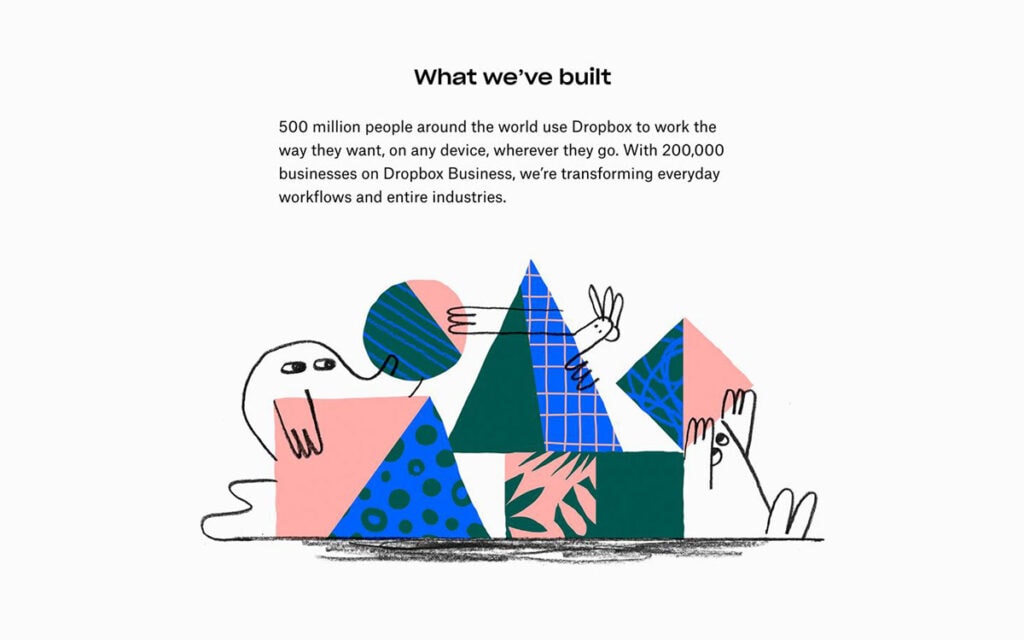
With custom illustrations, content marketers can customise content unique to the end user's needs. The more customised the content is to the audience, the more likely they will consume it. The result is better ROI (return on investment) for businesses and increased customer loyalty.
For instance, a local business might have a “Welcome to our Business” email campaign where they showcase their local business. They may also feature a short video of the staff, photos, and other content. One of the emails may include a cartoon of the local business. With a personalised illustration, the content creator can show what the local business is like or showcase a different aspect of the business.
The key benefit of using a custom illustration in content marketing is increasing engagement and loyalty with users and customers. When content is unique, it helps people understand the message better, increases the chances of someone engaging with it, and increases the likelihood that the user will return for more. The result is a return on investment for companies looking to market their brand.
6 – Screenshots
Informative screenshots are helpful for any content – blogs, ebooks, infographics, etc. The main idea behind the informative screenshot is that the reader can see the product or service at a glance.
Use informative screenshots to create effective and attractive visual communication. Here are several reasons why you should use informative screenshots in your content marketing:
They attract readers
As already mentioned, screenshots can be an effective way to communicate with your target audience. The image is something that catches the eye in the first few seconds. For this reason, people tend to look at it first.
They explain the information
Screenshots are an easy way to explain complex information to the reader. They are an excellent tool to describe different components of the product or service, explain its advantages and disadvantages, and present it visually.
They are useful
The most obvious reason is that the pictures help demonstrate the product and services.
They are professional
You should choose screenshots if you want a high-quality way of visualising the content. It doesn't matter whether you have a graphic designer or not. The quality of the image is what matters. Using them will give your content a professional touch.
7 – Embedded Social Media Posts
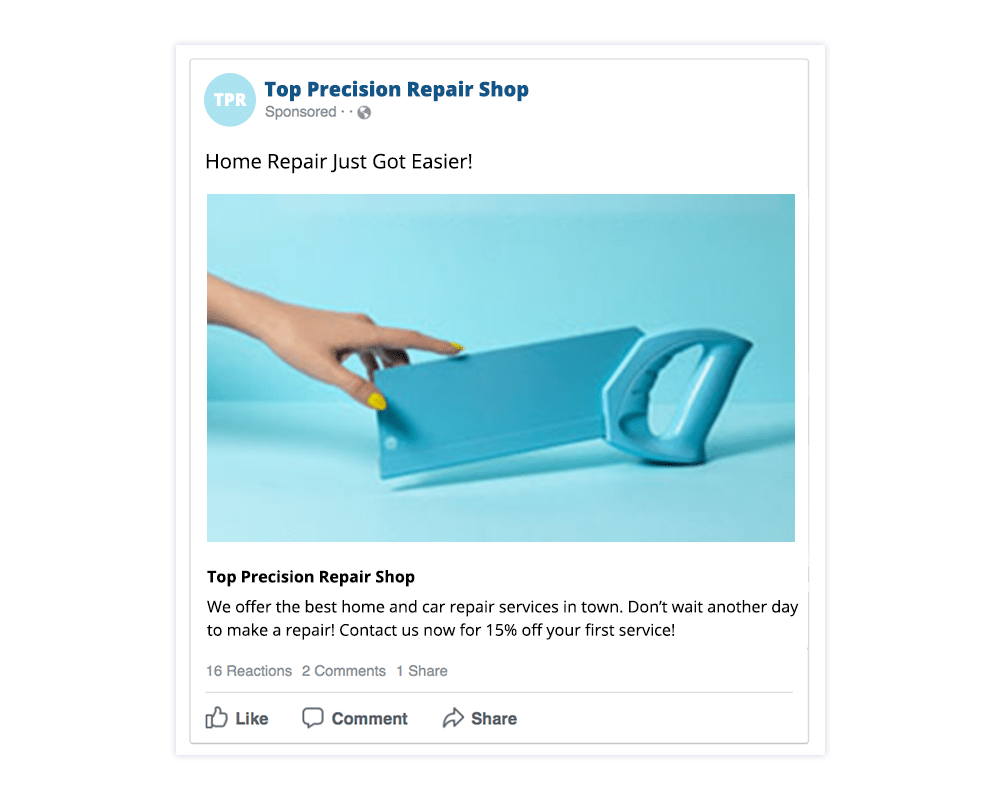
Social media has been a considerable growth driver in content marketing. Social media platforms now reach over two billion users worldwide, and with mobile usage on the rise, it's no surprise that social has a significant impact on content marketing.
Websites and businesses using social media have found that social shares and engagements are crucial to the success of their content. However, these posts aren't always shared or liked by audiences, and some posts are never shared.
Embedded social media posts can provide a solution to this problem. These posts show up in the social media stream and can increase engagement and social sharing for your audience.
Here are five reasons you should consider embedding social media posts in your content marketing:
Increase social sharing
The most significant advantage of embedded social media posts is that they allow your audience to share your post directly from the platform where they view it. Social media sites have many ways to share, including liking and tweeting, and embedded social media posts easily connect to an audience.
Increase likes and shares
Embedded social media posts are a great way to get your audience to interact with your content on their social media platforms. People enjoy liking and sharing content they find engaging, and embedded social media posts offer a way to engage with audiences on various social platforms.
Grow your community
Embedded social media posts encourage social sharing and increase engagement on social media platforms. With this engagement comes the opportunity to grow your audience and connect with them through social media.
Increase traffic
When your audience shares your content on their social media profiles, they drive traffic to your website. This means that if you are posting content regularly, it increases your exposure and the possibility of gaining new followers and customers.
Engage your audience
With embedded social media posts, you can create an experience for your audience that engages them on their social media platforms. People who enjoy and share your content on their social media accounts give you another way to engage with your audience.
8 – Cartoons and comics
Cartoon and comic strip marketing are among the most fun ways to reach potential customers. This method works well on social media platforms like Facebook, Twitter and Instagram.
Cartoons and comic strips are easy to create and a great way to engage with people. There are several ways to use cartoons and comics in your content marketing strategy.
- Promote special events and holidays. If you have a special event or holiday coming up, it would be great to use cartoons and comic strips in your marketing strategy. Using cartoons and comic strips, ensure you include relevant information about the event. For example, you could share cartoons related to your product or service.
- Get in touch with your audience. This is a great way to get in touch with your audience. If your target audience likes cartoons and comic strips, they are likelier to read your message. You can use them to make viral jokes with your audience.
- Show empathy. People like to see a sense of humour in a cartoon. Use this to show your audience that you understand their problems. Using cartoons and comic strips will increase your audience's chances of sharing your post.
- Increase engagement. People who use social media have a large group of friends and followers. Showing your audience that you can make them laugh will be a great way to get their attention.
9 – Memes
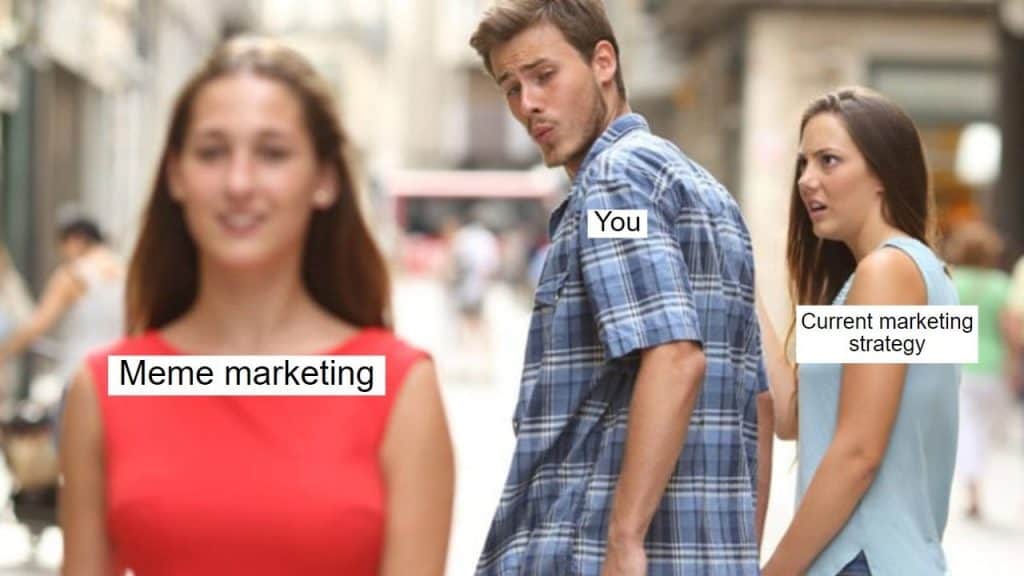
Memes are powerful and versatile tools for creating memorable experiences and engaging your audience through a visual format. Memes are short, humorous social media posts that can be created using text, photos, videos, and links. They can promote brands, products, services, campaigns and events.
When used effectively, memes can get people engaged with brands in a fun way, increase brand awareness, and build positive emotional connections with customers.
Memes can create positive emotions such as amusement, humour, laughter and joy. They can be a great way to engage consumers and encourage interaction. They are unique and memorable content that engages people on social networks and encourages sharing. Memes are a perfect way to capture consumer attention.
Creating memes requires little effort. Memes can be created using Canva, Photoshop, or PicMonkey. If you use Memes in your Content Marketing Strategy, they can help increase sales, brand awareness, engagement, and reach. We can use memes on social media platforms like Facebook, Twitter, Instagram, LinkedIn, and Pinterest.
10 – Animated Gifs
Animated gifs are an excellent tool to add interest, humour, and creativity to your articles and blog posts. By creating your animated gifs, you can express your message differently. An animated gif is more than just a funny or exciting image; it's an easy-to-read, attention-getting, memorable, and shareable format. It can immediately capture your reader's attention and build an emotional connection between you and your audience.
Animated gifs also can simply convey complex messages. They can tell stories and create intrigue and interest while keeping your content interesting and easy to read. They can be used in various scenarios and formats, such as social media images, presentations, infographics, video slideshows, and blogs.
In addition to the above, animated gifs are a great way to show your creative side. Animated gifs can provide an original and fresh perspective on your articles and blog posts. A unique animation style can help you stand out and attract attention to your content.
11 – Visual quotes
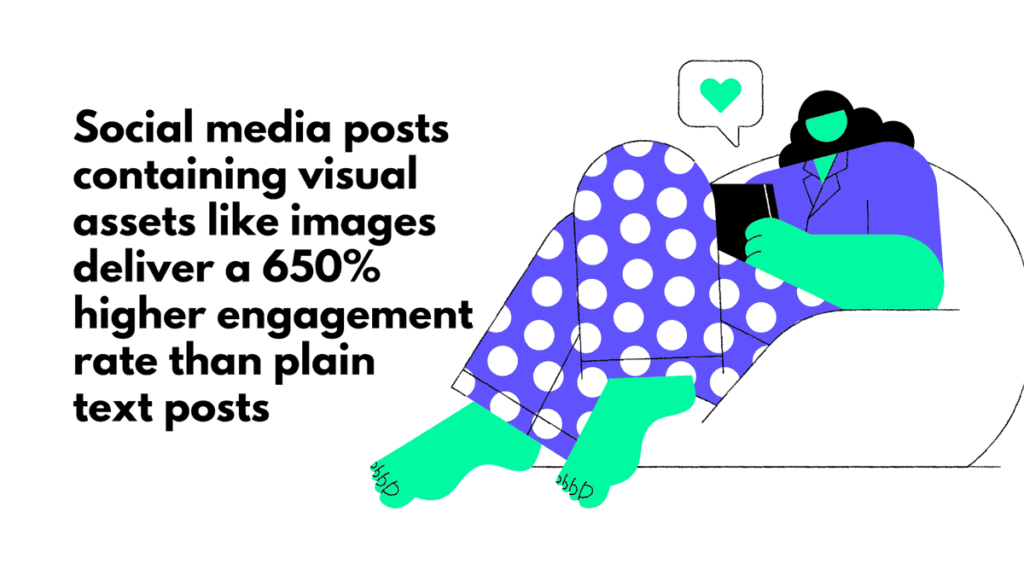
Businesses have used visual quotes for a while now to build an identity. They are seen as creating an emotional response to a message. The quote is often inspirational, such as a quote from a great writer.
However, if your product or service has a visual element, such as a photograph, a logo or a cartoon character, you can use that in your visual quote. For example, if your company sells toys, you might choose a quote about creativity.
A visual quote can help your business by making it memorable to users. They will emotionally connect with the quote and may associate your brand with a positive and uplifting experience. So a quote about creativity and fun would be a good choice if you're a toy company.
People like to relate to something they recognise. Using a quote, mainly if it is famous, is a good way of making it more relatable. It shows that you care about the product or service you promote and helps personalise it.
People also like to see themselves reflected in a product or service. For example, if you sell washing machines, you might show a famous quote relating to how people wash clothes. The quote reflects your brand personality, making it more appealing to users.
12 – A Call-To-Action
Visual Calls To Action (CTA) are a fundamental part of the content marketing mix, but you should always be aware of the limitations. The most common limitation is that they're not always practical.
However, they can be effective when used in conjunction with text CTAs. For example, if you use a button to call to action a blog post, you need to include some text, as people don't necessarily read the whole blog post.
One of the best uses of a CTA is if you want to drive visitors to a specific landing page. For example, if you have a lead magnet, you can create a CTA that says, “Download our free guide to [insert your lead magnet here]”. You can place this either above or below the fold.
13 – Data visualisation

Today, we can see data everywhere; we have it on our smartphones, laptops, and many other forms of technology. Data is the major resource companies use to run their business, so there is no question of neglecting it.
It is an easy and affordable way to convey information and present your products and services to customers. It lets you connect with them through content, graphics, and other visual components.
The importance of data visualisation in Content Marketing has been increasing lately. Many brands and businesses use this form of digital content to boost sales. Data visualisation is the most convenient way to represent information and share it with a large number of people at the same time. It gives a unique style to any piece of content. It also helps to generate awareness and interest in your product and services.
14 – Slides and presentations
Presentations are an excellent way to visually represent a company's services, products or solutions. They are also an effective way to introduce ideas and information to clients, potential customers, investors, or employees. When done correctly, a presentation can demonstrate the company's expertise and professionalism and reinforce its brand image.
For a presentation to be effective, it must be relevant, exciting and captivating. It should also show a good balance of images and text. You can use text to explain concepts, offer statistics or provide additional background information. Images can be used to communicate these points visually but are more effective.
Presentations also allow companies to use video to their advantage. In a video, viewers can see a speaker's facial expressions, gestures and body language, which can help convey the message. This helps build a connection between the presenter and the audience. It can also make it easier for people to recall the message in their minds.
You can use slides to complement or illustrate a presentation. For example, a slide can explain a concept in greater detail or highlight key messages. You can also use slides to give visual continuity across different media types, such as social media posts, websites, blogs and email newsletters.
While slides are not strictly necessary for every presentation, they are a valuable tool to use when making a presentation. A slide template or presentation guide can help make a presentation more effective and engaging.
15 – Webinars

Webinars allow you to deliver information and education differently. For example, they can help educate people about new product launches, share insights from experts in a particular industry, and encourage customer feedback about your business. They're also an effective way of attracting and keeping customers and prospects.
Webinars are a great way of getting a quick response to a question that needs answering quickly. This can make all the difference to how effectively your business gets heard.
The most significant plus point of webinars is that they allow you to present in front of an audience. You'll be able to speak directly to your audience, answer questions, and demonstrate how your products or services work. This is a great way to connect with existing customers and attract new ones.
Conclusion
Today, visual content marketing is often viewed as an integral part of the marketing mix for many businesses. The ability to attract new audiences to your website and convert these visitors into loyal customers is vital to the continued growth of your business.
In fact, according to Forbes, companies who utilise an effective content marketing strategy see up to four times more leads than their counterparts who don't use this marketing tactic. So, how can you use visuals to capture the interest of your audience and entice them to take action?
Access 15 types of visual content marketing tools to help you build a powerful brand right now.
